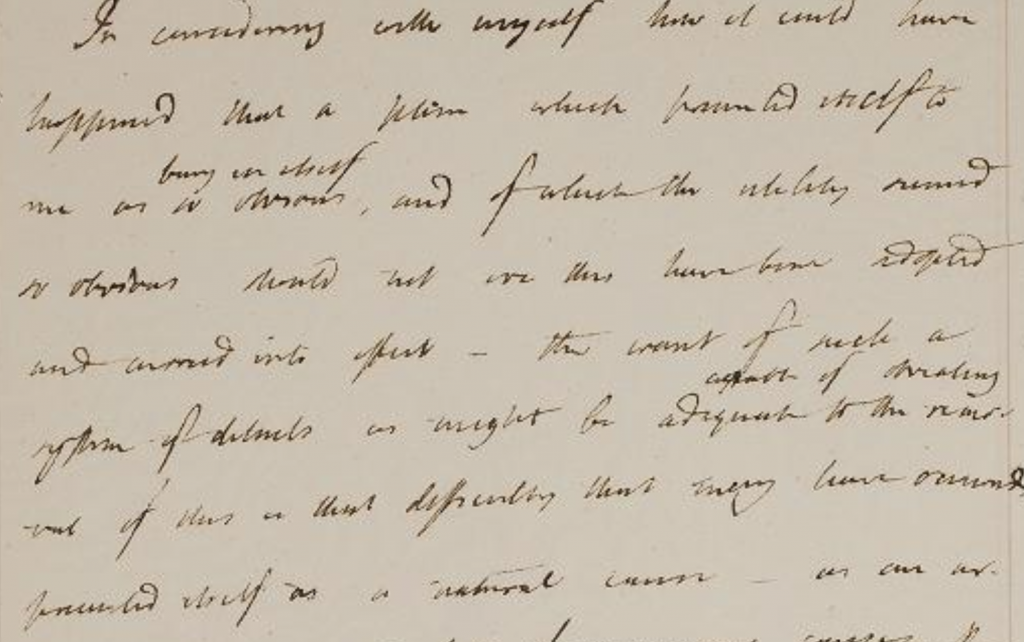Digitization of Bentham’s Papers Completed
The University College London Bentham Project has announced that the digitization of the writings of Jeremy Bentham has been completed: “thousands upon thousands of images of Bentham’s manuscripts are now available in electronic form.”
The Transcribe Bentham initiative was led by a team consisting of Louise Seaward, who oversaw the contributions to it, Philip Schofield, director of the Bentham Project, Melissa Terras, who works on digital humanities, and Rory McNicholl, an IT specialist in digital archives.
Dr. Seaward writes:
We now have digital images from the 173 boxes of Bentham Papers held in Special Collections at UCL, which include Bentham’s thoughts on his Constitutional Code, the Panopticon prison and the Church of England amongst other subjects. A further 20 boxes of material from The British Library have also been digitised, some of which comprise letters to and from Bentham and his family. In total, we now have a whopping collection of over 95,000 digitised images (around 80,000 from UCL and 15,000 from The British Library). These images are linked to detailed metadata prepared by Bentham Project researchers, some of which is available online via the Bentham Papers Database.
Lots of this material is already available online via our Transcription Desk and the digital repository of UCL Library. Over the coming months, the rest of the digitised papers will be uploaded to the websites of UCL and The British Library.
The digitization was a long and labor-intensive process, she says.
It involved hours spent by UCL Digital Media Services in a darkened basement sifting through delicate manuscripts, taking images, refining their quality and matching them to metadata records. We frequently had to transport boxes of Bentham’s papers across the UCL campus, sometimes in taxis but more often by hand, dragging a loaded trolley across Gower Street. Intensive manual checks of long lists of images were also necessary to ensure (as far as possible!) that all folios had been digitised.
Why digitize Bentham’s works?
It [is now] possible for anyone around the world to read Bentham’s ideas in their original form. Transcriptions provided by volunteers on Transcribe Bentham are helping to enhance the accessibility of these papers, meaning that they can be explored more easily. Digitisation speeds up the Bentham Project’s work on the scholarly edition of Bentham’s writings. Researchers at the project can now easily consult digital images on their computer when they wish to transcribe a page or double-check the spelling of a difficult word. Excitingly, our images and transcripts represent a dataset that can also be exploited with new digital techniques. We are already experimenting with training Handwritten Text Recognition technology to process Bentham’s handwriting as part of the READ project and there are intriguing possibilities for text mining, mapping and network analysis ready for future scholars.
There’s more information at the Transcribe Bentham site.
(via Daniel Brunson)


